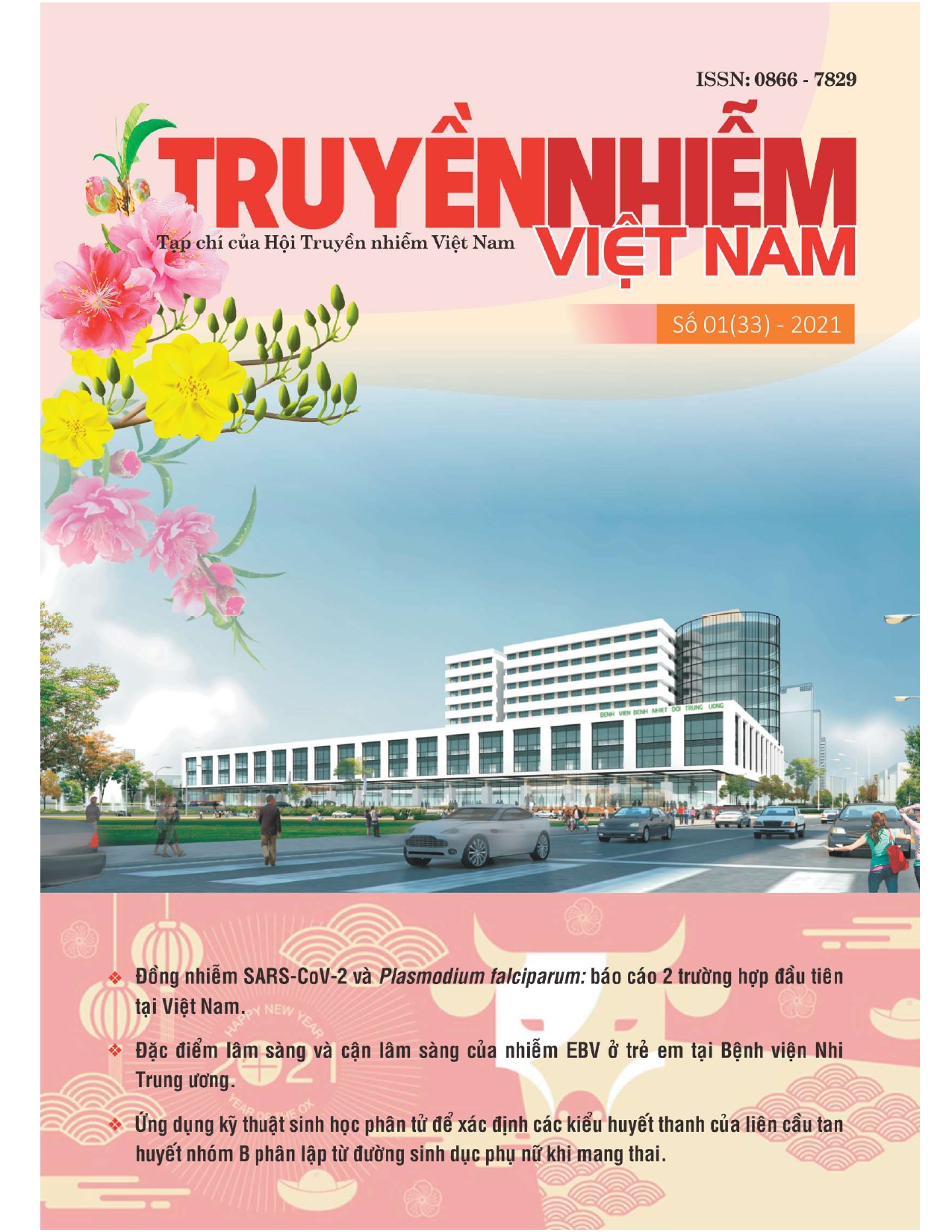CLINICAL AND SUBCLINICAL CHARACTERISTICS OF HEPATOCELLULAR CARCINOMA IN CHRONIC HEPATITIS B PATIENTS TREATED IN NATIONAL HOSPITAL FOR TROPICAL DISEASE
Main Article Content
Abstract
Objective: Describe the clinical, subclinical characteristics of hepatocellular carcinoma (HCC) in chronic hepatitis B patients receiving antiviral therapy.
Objects and methods: Retrospective descriptive study of 39 patients appearing HCC during antiviral treatment at the outpatients of National Hospitalfor Tropical Diseases from January 2013 to December 2019.
Results: 74.4% of male patients. The average age was 58.0 ± 10.0. Most of patients live in rural areas (66.7%). The most common underlying disease was diabetes (10.3%). 59% of patients used alcohol. Most patients were treated with TDF (71.8%). The majority of patients, when starting antiviral therapy, showed signs of cirrhosis (82.0%), of which 33.3% showed signs of decompensated cirrhosis. The most common clinical symptoms were fatigue and anorexia (82.1%). Patients had a platelet test that was lower than normal values (131.1 ± 85.5). Fibroscan index of liver fibrosis was high (26.7 ± 22.9). HCC prediction scale value: CU- HCC at high risk level (16.8 ± 15.1).
Conclusion: Patients who develop HCC during antiviral treatment had the following characteristics: old age, male, living in rural areas, habit of alcohol use, late treatment of antiviral drugs when available cirrhosis and decompensated cirrhosis. Subclinical tended to have features of cirrhosis.
Article Details
Keywords
Chronic hepatitis B, hepatocellular carcinoma (HCC)


